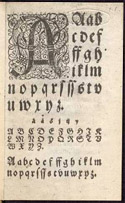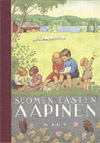Finnish schools and the book publisher WSOY have a long history together. Finnish government's decisions have played an important role in the development of educational materials thrughout the years. Finnish school system has changed many times and this has required changes also in schoolbooks.
- The most important event in history from the schoolbook publisher's point of view has been the new comprehensive school system in 70's, says product manager Juha Ala-Hiiro from WSOY.
- The latest news about Finland's excellent results in the latest international comparisons are really important also in a sense that in Finland the common school issue was ordered later than in other Nordic coutries, Ala-Hiiro says.
WSOY's schoolbooks to celebrate 120th anniversary
 In 2004 WSOY's schoolbooks celebrate their 120th anniversary. In 1884 the first schoolbooks called N. Setälä's Vähäinen suomalainen lukukirja (small Finnish reading book) andM. Zaengerle's Kemian alkeet (Basics of Chemistry) were published by Werner Söderström.
In 2004 WSOY's schoolbooks celebrate their 120th anniversary. In 1884 the first schoolbooks called N. Setälä's Vähäinen suomalainen lukukirja (small Finnish reading book) andM. Zaengerle's Kemian alkeet (Basics of Chemistry) were published by Werner Söderström.
Schoolbooks have followed their time in layout as well as in their shape and content. Recently educational materials have been reshaped in electronic format as internet and other electronic media have become more common. - I see that electronic educational materials will become more common beside the books, Ala-Hiiro says. - A book is still very competitive - it is easy to use and it contains a carefully selected amount of audited content.
From Turku Academy to top schools in the world
1640 Turku Academy, Finland's first university was founded. After Turku fire (1827) the university was moved to Helsinki and was named University of Alexander.
1843 The first Finnish school system was approved. In addition to the university Finland had 5 high schools 10 upper primary schools and 30 primary schools and 4 schools for girls.
1884 N. Setälä's Vähäinen suomalainen lukukirja (small Finnish reading book) andM. Zaengerle's Kemian alkeet (Basics of Chemistry) were the first schoolbooks published by Werner Söderström.
 1919 Matriculation examination was moved from university to schools.
1919 Matriculation examination was moved from university to schools.
1921 Compulsory education law. Finland was decades behind other Nordic countries even though the parliament has discussed about the subject from 1890's.
1945 Numerus clausus was founded in order to limit the access to universities.
1957 Common school was set to seven years.
1968 Comprehensive school law. In the same year the first publications of  schoolbooks were published. Comprehensive school system started from Lapland in 1972 and in Helsinki metropolitan area in 1977.
schoolbooks were published. Comprehensive school system started from Lapland in 1972 and in Helsinki metropolitan area in 1977.
1982 Course based education started in high schools.
2000 Free pre-school education for 6 years old begins.
2004 First results from the PISA study of 40 countries ranked Finland the best in the maths, reading and science tests.
Specialist: Antti Lappalainen, fill-ins from 21th century Juha Ala-Hiiro.